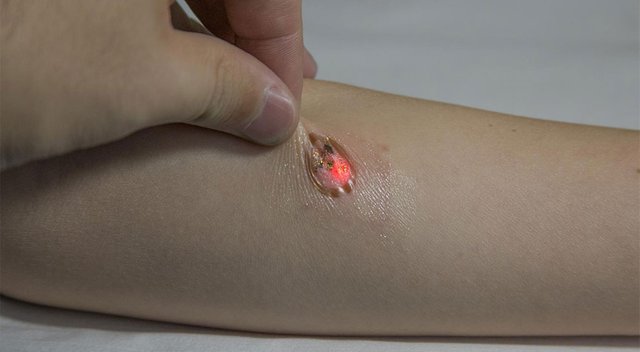
A team of researchers from around the globe have created an ultra thin monitoring device that attaches to the skin like a patch.
The patch is very comparable to a tattoo and monitors a variety of health-related concerns. It is most often used in the tracking of temperature, exposure to UV, patient heart rate, skin color variations and blood oxygen levels. A paper was published within the Science Advances Journal that explains the new development in complete detail.
In recent years more and more people have been looking to take control of their health, which is evident in popular technologies such as the Fitbit or phone applications that help track daily calorie intake or your daily steps. These types of devices are generally worn as bracelets meaning they are very limited in what they can and cannot do. Many of these technologies are extremely handicapped due to their very small battery life. The researchers created a new monitor, which has not been named at this time that does not require the use of batteries at all.
The device is powered through capturing the tiny amounts of energy that are emitted by smart phones and tablets, which use near-field communications (also known as NFC). This is a type of technology that requires electromagnetic induction among antennae that are located inside portable devices. Radio frequencies are used to send and receive information. Researchers found that they could use this as an energy source, making batteries something that is no longer required.
Once the battery was no longer needed, the team was able to build a device that is as thin as your everyday decal. This makes it extremely flexible and it adheres easily directly to the skin, all the while collecting data about the wearer and sending that information wirelessly to a device nearby in real time.
The device has LEDs that are located on the skin side of the decal which shine a light into and onto the top of the skin. The light that is reflected back is used in the measuring of heart rate, skin color variations and oxygen levels within the blood. The dye-based light sensor is used to measure ultraviolet light while another sensor is used in the monitoring of skin temperatures.
As of yet there is a drawback to the monitor and that is that it requires there to be a phone or tablet nearby that contains the NFC power within a few inches. This means while wearing said device, patients would have to have a device in their shirt or pants pocket. So, while the device itself may not require a battery, you are going to need to worry about the battery life of the device you are using in order to power your monitor. A way to make up for this would be to have your phone or tablet plugged directly into a portable charger. However, this is yet another thing the patient is going to have to hold on to and can be very limiting, especially with older patients who would not feel like carrying around multiple items everywhere they go.
Another option for the new device involves a dedicated NFC device that provides much more power. Researchers say their new monitoring device is going to be able to provide a very useful tool to health care facilities and may one day be able to benefit the population as a whole. One thing is for sure, while it has its downsides and is still in its beginning stages, there are some wonderful changes being made. One day less power may be required and devices will most likely be even smaller, making having a tracking device easier than ever. The research team is very excited to continue to advance the technology and see where it leads. Only time will tell where this technology goes next.

Like what you read (without annoying ads :) ) ? Then please upvote our posts and follow us for the best daily science news on SteemIt!
wow very cool!!
Downvoting a post can decrease pending rewards and make it less visible. Common reasons:
Submit